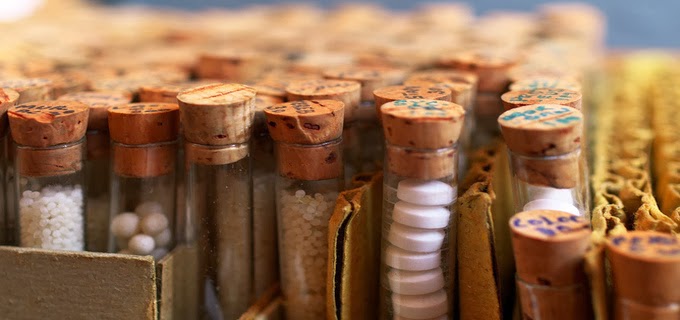Baptisia is a well-known, tested remedy for day-to-day ailments. It is related to decay and fetidness. For example, the diarrhoea of typhoid fever in which the stools smell awfully putrid will best respond to Baptisia. Typhoid diarrhoea is not that severe, but the stools are pasty and smell foul.
Baptisia is very useful in the infectious conditions of the throat. The throat
is commonly involved in infections which may not be painful as yet, however,
the tonsils exhibit the grievous state of infection. Baptisia is the most effective homoeopathic remedy for such a
throat condition with offensive odour, even if there is no associated pain. In cases of uterine sepsis and infections of
other parts of the body associated with putrefaction, Baptisia is very useful,
but the best remedy would still be Sulphur 200 and Pyrogenium 200 given together.
However, if the specific symptoms of Baptisia are manifest;
Baptisia 30 may also be administered for added advantage. In typhoid
fever, if the signs and symptoms of Baptisia are present, administration
of Baptisia is a must. The combined use of Typhoidinum 200 and Pyrogenium 200
will enhance its effectiveness. In
typhoid, the distension of the abdomen is much more compared to the degree of
fever. The entire body is being melted gradually, while the belly becomes
puffed up. In this condition, if Baptisia symptoms are also present, then the
following regimen should be implied:
1. Until the fever
subsides completely i.e. no fever in the morning and evening, Typhodinum and
Pyrogenium should be administered three times a day and Baptisia 30 five to six
times a day.
2. After the fever has
subsided, Pyrogenium and Typhoidinum should be administered once a day and
Baptisia 30 three times a day, for at least one week.
3. In the third week,
Pyrogenium and Typhoidinum should be administered twice a week and Baptisia 30
three times a day. If the above regimen
is continued for at least 21 days then there will be no fear of recurrence of
typhoid and, by Allah’s grace, no residual bad affects will remain.
In case there are no associated symptoms of Baptisia and
the patient is rather constipated, Kali Phos and Ferrum Phos 6X should be used along
with Typhoidinum and Pyrogenium (instead of Baptisia). One homoeopathic doctor has written in his
book about a patient who went blind due to typhoid and regained his eyesight
during a fever he contracted after taking some other medicine. Such astounding
events do take place, although rarely. According to allopathy, neurologists claim
that once dead the nerves cannot rejuvenate. One thing is definitely certain
that typhoid is a very dangerous disease. Its ill effects on the brain can
result in insanity for the rest of ones life. Such an afflicted patient
exhibits signs of Stramonium and Hyoscyamus (both these remedies are also
useful in typhoid). They ameliorate the symptoms but do not provide a cure.Baptisia is also useful in dental diseases especially when the gums are inflamed, produce
stinking pus and recede from the teeth.
One typical sign of Baptisia is that the patient is drowsy or
semiconscious. He feels as if his limbs
are not connected together. His personality is also similarly divided. The
organs of his body are lethargic. Even on being awakened, he is drowsy, trying
to concert his efforts. He sometimes talks to his limbs. At times, he feels as
if one of his legs is actually talking to the other. He has to be aroused to answer
a question, yet he will fall asleep while still trying to find an answer.
Baptisia is the best remedy in such a state of mental confusion, provided the
other symptoms of Baptisia are also present.
In Baptisia, the stools are clay-coloured, yellowish or sometimes greyish
and are pasty in nature. At times there are beads of cold sweat on the forehead
showing that the body strength is dwindling. In this condition, the tongue
becomes dry and stiff, ulcers form around the teeth which stink. Even in this
grave condition, if given promptly, Baptisia may restore life.
In Baptisia ulcers in the mouth can become gangrenous (Cancrumoris).
They are not painful though there is an extremely bad taste in the mouth. The
tissues around the ulcers become numb and demarcated or separated. At this
stage, the Homoeopathic remedy cannot reach the affected tissues. So it is
important that the condition be diagnosed in good time in order to avert this
grave situation. In Baptisia,
involvement of the throat permits the swallowing of the liquids but causes
great difficulty in
swallowing solid food. If the patient forces himself to swallow the
solid food, he may choke himself.
In Baptisia, some ailments manifest weakness due to
paralysis. On the same basis the intestinal paralysis causes distension of the abdomen.
In Homoeopathy, it is vital to know the basic nature of the remedy. A
characteristic feature is that the afflicted part of the body is only partially
paralysed and there is decreased sensitivity of that part to the pain. By
remembering this particular feature, Baptisia will hopefully be put to use in a
timely fashion.





